Everything is, as they say, a matter of perspective. And of relation, of one to another, to others.
Hong Kong is a small place. As a city in its own right, its 7.3 million people make Hong Kong the 46th biggest city in the world by population, and the 104th biggest country in the world, bigger than 129 others.
But there are ten Chinese cities bigger than Hong Kong, including three in Guangdong alone: Shenzhen, Dongguan and Guangzhou. And of course, the country that contains them has 1.4 billion people, compared to which Hong Kong is little more than a speck hanging off a spit of land on its southeastern corner, a unique and special speck, but a speck nonetheless.

In terms of land area too, Hong Kong is small, dwarfed by the other contested territories on China’s peripheries.
Tibet is enormous. Its total area, comprising the traditional three provinces of U-Tsang, Amdo and Kham, is 2.5 million square kilometres, making it the tenth biggest country in the world, just behind India, Argentina and Kazakhstan.
China invaded Tibet in 1950, and in 1965 established the Tibet Autonomous Region, a misnomer if there ever was one. It comprises 1.2 million square kilometres, less than half the size of traditional Tibet, and more Tibetans live outside the TAR than inside it.
Xinjiang, whose full name is Xinjiang Uighur Autonomous Region, another misnomer, or East Turkestan to those who don’t accept Chinese rule there, is also huge — 1.6 million square kilometres. (I prefer to avoid the term “Xinjiang” since it is inherently colonial, meaning in Chinese “new frontier”, clearly from the Chinese perspective. It is used here solely to designate the XUAR, the entity set up by the Communist Party in 1955.)
China would look a lot different without Tibet and Xinjiang, which together make up about 42% of the area under the rule of the Communist regime.

Even Taiwan is many times bigger than Hong Kong: nearly 36,000 square kilometres versus Hong Kong’s approximately 2,700 square kilometres, only 1,000 of which is land, the rest being water.
Population-wise, these peripheries are in closer in size: Taiwan has 23.5 million people, Hong Kong 7. 3 million. There are 11 to 15 million Uighurs and 6 million Tibetans.
Altogether, they add up to about 51.8 million people at most. While this would make for a largish country (27th in the world, between Burma and South Korea), it’s again a drop in the bucket compared to China’s 1.4 billion, amounting to something like 3 per cent of its overall population.
In these shifting perspectives on population and area, these peripheries, Hong Kong, Tibet, East Turkestan and Taiwan, appear now tiny and now immense (well, except for Hong Kong).
But in terms of the challenges they have posed to Communist Party rule, especially in the last decade, the peoples of the peripheries have an importance disproportionate to their numbers.
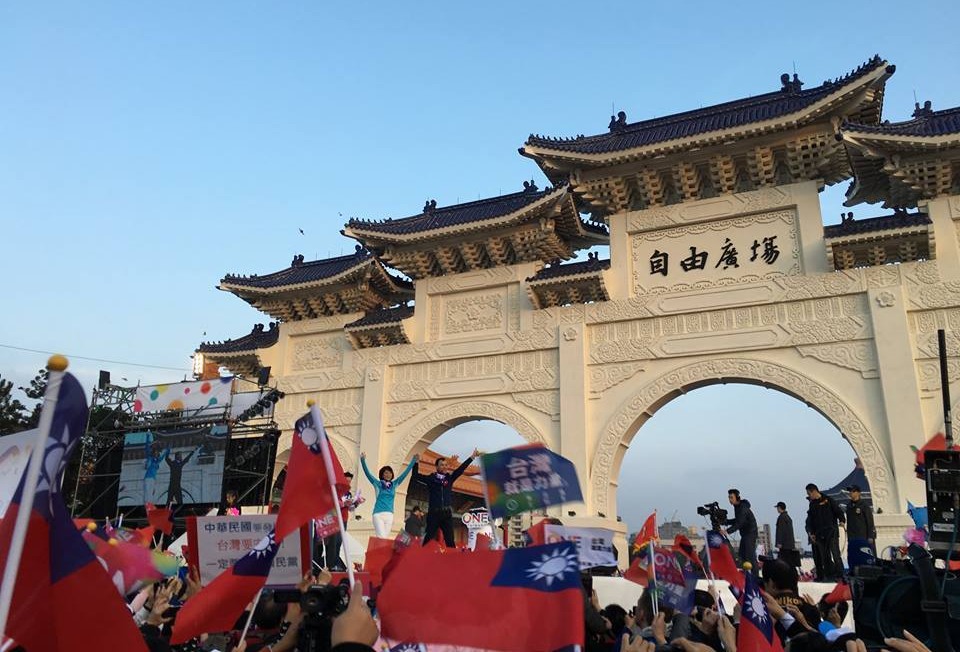
Ten years of uprisings
It all started in 2008, the year of the Beijing Olympics, lest we forget — it already seems so long ago. In March, protests broke out across the Tibetan plateau and continued for about two weeks. It was the largest uprising of Tibetans since 1959, and it occurred across a very wide geographical area, encompassing nearly every part of Tibet, including areas traditionally considered restive and and those expected to be quiet.
These eruptions were followed in April by pro-Tibet protests along the global route of the Olympic torch relay that repeatedly disrupted the torch’s progress and forced organizers to change the route to avoid protesters.
In the following year, 2009, the first post-uprising Tibetan self-immolation occurred. Since then, upwards of 150 Tibetans have self-immolated, the number peaking in 2012 with 86 documented cases.
The self-immolators’ most frequent calls have been for “freedom for Tibet” and the return of the Dalai Lama. This type of protest occurring so regularly over such a long period of time — nearly a decade now — is unprecedented anywhere.

In 2009, the year after the protests across the Tibetan plateau, violence broke out in Urumqi, the capital of Xinjiang, with Uighurs murdering Hans, the majority group in China. Hans and Chinese security forces responding with reprisals that included murder, torture, executions and mass disappearances that to this day have not been explained. This set off a pattern of Uighur resistance and Chinese crackdown.
China’s repressive measures are taken in the name of “counter-terrorism”. It appears there have been one or two incidents that could be classified as terrorism, in that they were indiscriminate attacks on civilians, and there have been several other violent attacks on security forces which appear to have had a political motivation. These are all very difficult to verify and investigate due to restricted access to the region and the closed nature of the government.
At any rate, the Chinese government’s repression is excessive, disproportionate and directed at the Uighurs as an ethnic group; we are currently in the crackdown’s harshest phase yet. Hundreds of thousands of Uighurs are estimated to have been detained in political re-education camps since April 2017, entirely outside of any judicial process and for indefinite periods of time.
A series of other “security” measures have made Xinjiang one of the most repressive places on earth, especially for Uighurs. Tibet also ranks among the least free places in the world.
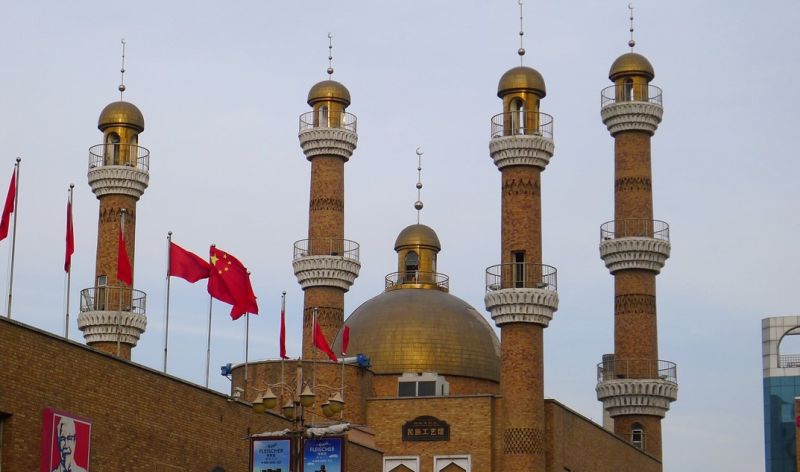
In both Tibet and Xinjiang, grassroots efforts by Tibetans and Uighurs to promote their language, culture and religion have met harsh reprisals, because they are regarded by the regime as attempts to strengthen a sense of separate identity outside of government control.
The two figures who perhaps best represent both the revival and the repression are Ilham Tohti and Tashi Wangchuk. Both hold what would elsewhere be considered moderate political views. Ilham has said he stands for the promotion of better understanding between Uighurs and Hans. Tashi is an advocate for the Tibetan language.
Both have explicitly stated they are against independence for, respectively, Uighurs and Tibetans. Nevertheless, Ilham has been sentenced to life in prison for “separatism” and Tashi Wangchuk to five years for “inciting separatism”.
In March 2014, the Sunflower Movement broke out in Taiwan, protesting against the Kuomintang government’s attempt to force through a trade pact with mainland China that protesters said would undermine Taiwan’s sovereignty and give China undue political influence. The pact was shelved, and the Kuomintang lost the next general election to the traditionally pro-independence Democratic Progressive Party.
Not surprisingly, Taiwan being the only periphery not under Communist control and the only one that is democratic, it is the only place where protests have succeeded in achieving their primary objectives. Indeed, the Sunflower Movement is an important milestone in the history of Taiwan’s on-going democratization.
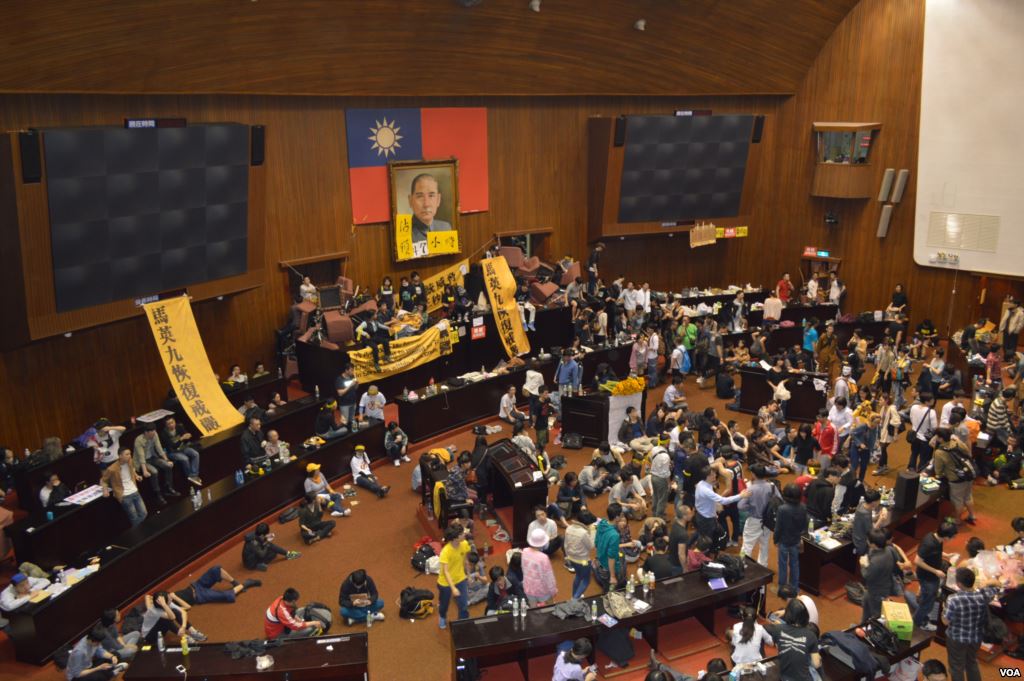
Later that same year, in September, the Umbrella Movement was triggered in Hong Kong by the police’s eight-hour teargas attack on nonviolent demonstrators, and led to 79 days of street occupations involving an estimated 1.2 million people in three central areas of the city.
The protesters opposed an attempt by the Party to impose fake universal suffrage upon the city. They eventually succeeded in defeating that effort, but Hong Kong is no closer to the genuine universal suffrage promised it by the regime in the city’s Basic Law.
As in Tibet and Xinjiang, the Party’s main reaction to protest in Hong Kong has been crackdown, but since it doesn’t have full control over the territory, it cannot use the same repressive means as in those regions.
Instead it resorts to prosecutions of hundreds of pro-democracy leaders and activists, disqualification of six democratically elected representatives to the Legislative Council, barring of other candidates from running for Legco on political grounds, greater restrictions on a variety of rights such as those to hold elected office, to vote, and to freedom of assembly, and stepped-up attempts to mainlandise Hong Kong: imposition of an anthem law, the transfer of Hong Kong territory to mainland jurisdiction at the express rail terminus, and efforts to exert greater political control over education and the judiciary.
This ten-year history is one all Hong Kong people, Taiwanese, Tibetans and Uighurs should know. Many know their own people’s history but too little of the others’. Knowing this history should make us all more aware of our common values of freedom and human rights and our common objectives of self-determination and democracy.
It should make us proud of our shared histories of resistance. And it should inoculate us against any illusions about our common adversary, the Communist Party.
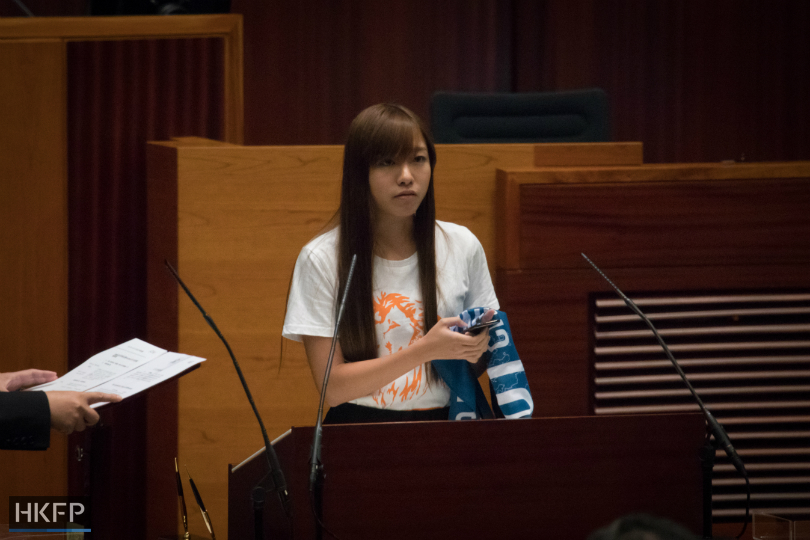
The Communist Party is imperialist to the core
The dynamic of imposition and resistance on the peripheries makes clear the imperialist nature of the Communist regime. It claims sovereignty over large swathes of territory without regard to the political desires of the peoples who live there. They are ruled by force, not consent. Their consent has never been asked for or obtained, let alone freely given.
Indeed, any attempt to assert their political desires is met with repression. Of course the same can be said of the Han people themselves. The only difference from the peoples of the periphery is that the Communist regime has not subjected them to colonization, just to dictatorship.
Han people who assert their rights and demand democracy and other freedoms are as much oppressed and as much our allies as any other peoples of the peripheries.
Not long after the Communist Party rose to power, it invaded Tibet. The 13th Dalai Lama had declared independence in 1913, and at the time of the invasion, Tibet was an independent state in virtually every respect. After occupying Tibet in 1950, the regime forced upon the Tibetan government the infamous “Seventeen Point Agreement for the Peaceful Liberation of Tibet” in 1951.
An uneasy co-existence between the Dalai Lama and the Communist Party obtained through much of the 50s but began unravelling towards the end of the decade as China imposed “reforms” in borderland areas it did not consider part of Tibet proper.
Tibetans resisted and thousands fled en masse to Lhasa, where, in 1959, acting on rumours that the Party intended to kidnap the Dalai Lama, Tibetans rose up and were crushed. The Dalai Lama fled to India, where he has remained ever since, and China proceeded to do with Tibet what it had intended to do all along, swallow it whole.
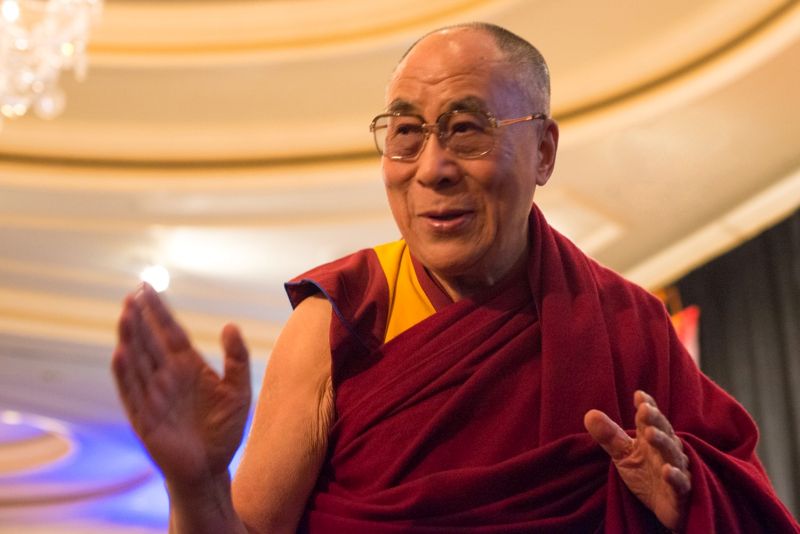
In East Turkestan, the situation was more fluid at the time of the Communist Party’s ascent to power. The Kuomintang’s Republic of China had crushed the establishment of the first East Turkistan Republic in 1934. This was followed by a Soviet invasion and then a ten-year period of rule by the warlord Sheng Shicai.
While the Qing Dynasty had always exercised influence over the region, it was only in 1884 that it declared Xinjiang a province and essentially incorporated it into the empire. The Communist Party took over Xinjiang in 1949 and created the Xinjiang Uighur Autonomous Region in 1955.
A separate modern Uighur identity began to appear a century ago, but nothing has done more to both threaten and reinforce it than Communist oppression.
Hong Kong was given to China by the United Kingdom in 1997, in what the Party calls its “return to the motherland”. Indeed, the “return” was the Party’s birthday gift to itself, occurring on July 1, the anniversary of the founding of the Party, and the “return” featured prominently in regime propaganda about the fulfilment of its promise to re-establish sovereignty over all of what it considered China.
The handover occurred without any participation of the people of the Hong Kong, who have never consented to the territory’s current status as a Special Administrative Region of the People’s Republic of China.
Taiwan exists as a separate entity and to all intents and purposes functions as an independent country. The Communist Party threatens forcible “reunification”. Taiwan’s modern history is very different from that of mainland China, with direct rule by Japan preceding the Kuomintang dictatorship.
A separate identity and political culture have flourished, especially since the beginning of democratization in the late 80s.
In this respect, Taiwan acts as a kind of model for the other peripheries which have not had the opportunity to develop independently. The Party abhors that model and seeks to undermine it; indeed, nothing is a greater affront to the Party than Taiwan’s de facto independence, precisely because it is such a clear expression of the will of Taiwan’s people.
Chinese Communist imperialism is a great irony since the Party has always staked its claim to legitimacy on its anti-imperialist ideology and its ability to regain and exert full sovereignty over China. The catch is that its idea of “China” is very different from that of the peoples of the peripheries.
It has down through the years stoked nationalism by railing against the humiliations inflicted upon China by Western and Japanese imperialists, while at the same time imposing its will upon Tibet, Xinjiang and Hong Kong and attempting to do so upon Taiwan.
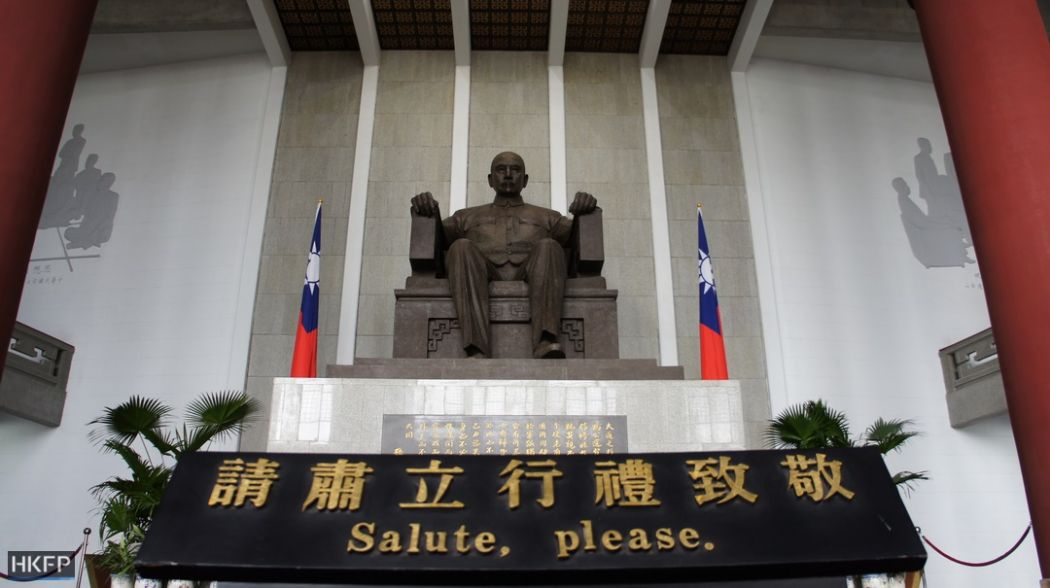
While our adversary is clearly the Party, not Chinese people, we shouldn’t be under any illusions that if China were suddenly to become a democracy, the peripheries would necessarily be so much better off. Chinese people have been so subjected to nationalistic Party propaganda for so long that they have largely imbibed the Party’s view. It would take a long time for them to develop a more accurate understanding of China’s relations with the peripheries, if they ever did.
In this historical period when Uighurs, Tibetans and Hong Kong people do not have the power to determine our own political status, we need to continue to assert our separate identity and our right of self-determination. This is much easier for Hong Kong people to do because of our semi-autonomy.
The repression in Xinjiang and Tibet is so harsh and pervasive as to render public assertion of separate identity dangerous if not all but impossible, especially in any sustained and fully articulated manner. In those places, “keeping hope alive” must take much subtler forms.
Peoples of the peripheries, unite!
Not only do we peripheral peoples need to more fully recognize our common goals and values of self-determination, freedom, democracy and human rights, we also need to share information and ideas and learn more about each other; we need to get better at communicating with one another, strategizing, coordinating and organizing together; we need to recognize our power and develop it. Above all, we must show solidarity with one another, a substantive solidarity that can come about only through mutual understanding.
This is just beginning to happen.
The best connections are between Taiwanese and Hong Kong people. Even in their case, ties only really began to develop after the Sunflower and Umbrella Movements, and it is only in this post-movement period that their common purpose has been fully recognized.
The Party finds this developing relationship threatening, as witnessed in its lashing out against Benny Tai for daring to mention the word “independence” while on a visit to Taiwan, or in the pattern of politically active Taiwanese being denied entry into supposedly autonomous Hong Kong.
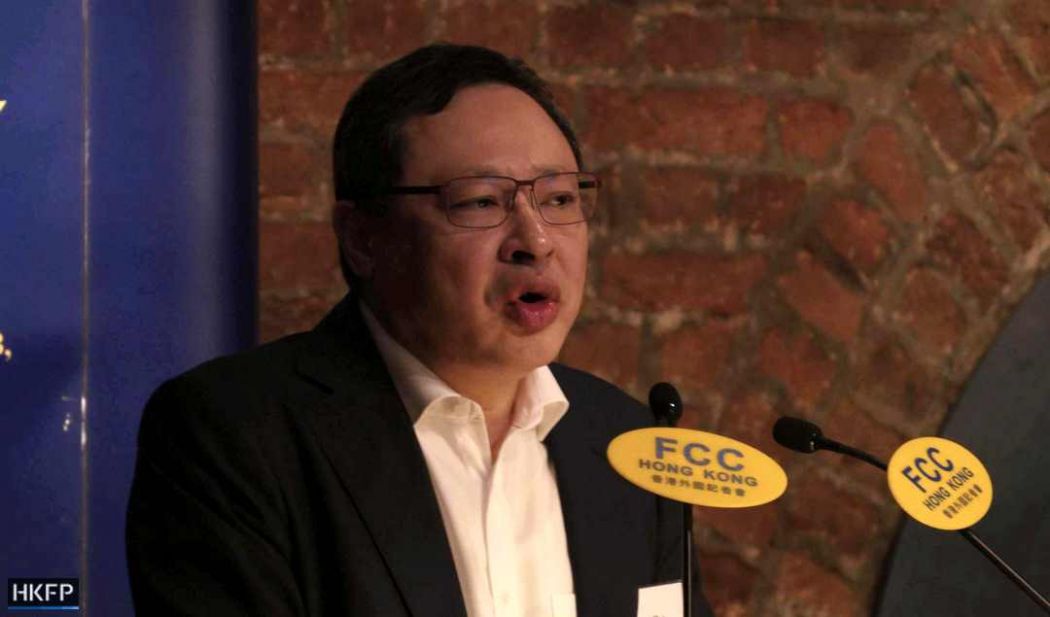
Chinese, Tibetan and Uighur exile communities, especially in London and Washington, have been cooperating with one another for more than a decade. They turn out for each other’s events on, for example, March 10 (Tibetan Uprising Day) and June 4 (Tiananmen Massacre) and often hold solidarity protests.
Among more progressive and youthful exile Tibetans, the importance of better understanding and communication has also been recognized. The Tibetan Youth Congress recently hosted a pan-Asian conference in Delhi, which included participants from Hong Kong and Taiwan.
Its communiqué calls for “the government of China to take immediate action to ensure the freedom, human rights and self-determination for the people of Tibet, Southern Mongolia, Hong Kong” (though strikingly, the Uighurs aren’t mentioned) and states that “inspirations drawn from the Sunflower Movement, Umbrella Revolution and other resistance movements around the world have motivated a new generation of activism.”
In early June, Students for a Free Tibet was the main organizer of the 2nd Tibet, Hong Kong, Taiwan Roundtable Conference on Freedom, Democracy and Self-Determination held in Washington, DC. The first was held in Taiwan last year. Again, strikingly, there was almost no Uighur involvement.
These are newer initiatives, both organized by exile Tibetan youth groups who were inspired by the Sunflower and Umbrella Movements and reached out to Hong Kong and Taiwan activists.
Other events have been going on for some time, like Initiative for China’s regular Interethnic/Interfaith Leadership Conference and the Tibet Office of Taiwan’s annual conference on Tibet, both of which bring together activists from mainland China, Tibet, Taiwan and Hong Kong.
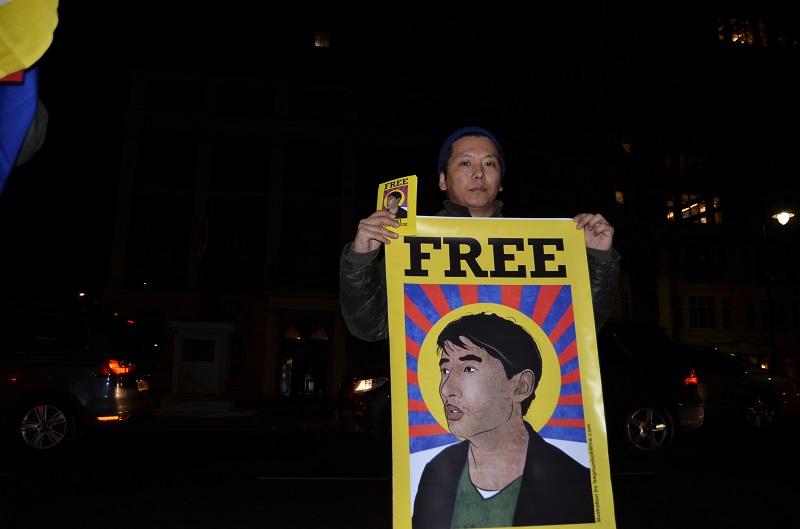
These are positive initiatives. They need to be stepped up and become less ad hoc, more representative, and more formalized. A coalition with a standing secretariat would be an appropriate goal: The Self-Determination Coalition of the Hong Kong, Taiwanese, Tibetan and Uighur Peoples.
There are challenges. Uighurs have to be more involved. Due to repression, cooperation with people inside Tibet and Xinjiang is virtually impossible these days. In light of that, exile groups have to be careful not to drag the agenda in a direction which does not consider the views and interests of the people inside, itself a challenge given how difficult it is to gauge opinion under totalitarian control.
Uighurs, Tibetans, Taiwanese and Hong Kong people must show solidarity with those inside, support them in their actions, publicize abuses committed against them, and lobby on their behalf, not only internationally but also in our own communities. In Hong Kong, for example, knowledge of the situation in Tibet and Xinjiang is not widespread.
The common debate: autonomy within China or independence?
Within the different peripheral communities there are similar debates about what the periphery’s relationship with China should be. Some argue for some kind of co-existence within a Chinese sphere of control, often referred to as the “real autonomy” position. Others advocate out-and-out independence.
Taiwan
Unsurprisingly, the debate is most advanced in Taiwan, whose people have taken a sharp turn away from China in recent years. Recent polls suggest that around 75 per cent of Taiwanese consider Taiwan and China separate countries. More than 60 per cent of Taiwanese identify themselves as Taiwanese, with only 3 per cent identifying themselves as Chinese (in 1991, the ratio was 17.6 per cent to 25 per cent).
The percentage who identify as exclusively Taiwanese rises to 78 among people 29 years or younger.
Support for an outright declaration of independence depends on how the question is asked. One study asked respondents if they favour independence if it would not cause the People’s Republic of China to attack. Seventy-five per cent of respondents said yes.
Opinion polls that pose the question with no qualifications show support for a declaration of independence hovering around 50 per cent. One survey asked respondents if they favour independence even if the PRC attacks, to which 43 per cent of those younger than 40 said yes.
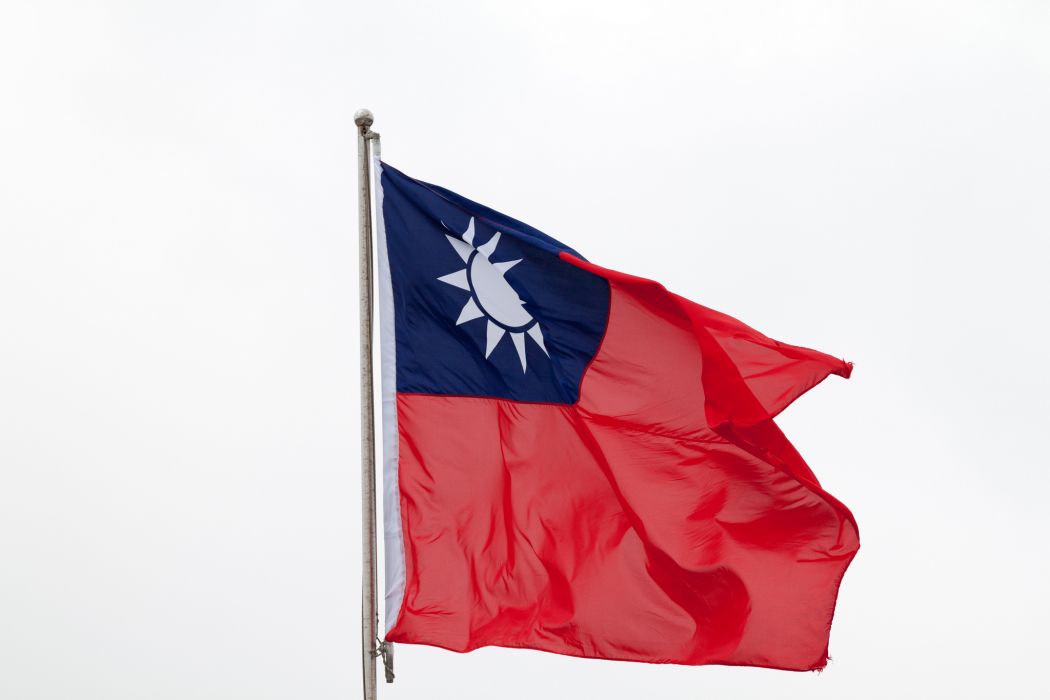
Tibet
Among Tibetans in exile, the Dalai Lama dominates and, many would say, suffocates the debate, even if unintentionally. In the late 1980s, he articulated the so-called Middle Way approach. It is similar to what some Hong Kong people hoped they were getting under “one-country, two-systems”: real autonomy, a democratic Tibet with sovereignty over domestic affairs, with China retaining responsibility for foreign policy and maintaining a military presence.
Moving to this position was a big political risk on the Dalai Lama’s part. Since China’s supreme leader at the time, Deng Xiaoping, had said that apart from independence, everything was up for discussion, the Dalai Lama believed his idea had some chance, but the Middle Way approach depended on goodwill from the Chinese side that was not forthcoming.
Many Tibetans regarded the Middle Way approach as a betrayal of what was rightfully theirs: independence. But they so revere the Dalai Lama that for a long time, most were willing at least to go along with the idea, even if their hearts found it hard to embrace.
In decades of living and working with Tibetans in exile, I have rarely encountered anyone with genuine enthusiasm for the Middle Way approach. At most, people will say it’s the most realistic. And now with negotiations entirely stalled between the Dalai Lama and the Communist Party, it is an open secret that the Middle Way approach is dead in the water, though it’s still the official position of the Tibetan government-in-exile.
The 2008 uprising in Tibet promised to act as a catalyst for change. The Dalai Lama called together a conference of diaspora Tibetans in Dharamsala to re-evaluate the Middle Way approach. My impression was that he really did want new ideas. But the conference was dominated by elders who ensured that it reiterated support for the Middle Way approach.

Though the Dalai Lama was too diplomatic to say so, I think even he was disappointed. Meanwhile, the Rangzen (freedom) movement, which explicitly calls for independence, has grown. It includes the influential Tibetan Youth Congress. A lot of Tibet support groups split the difference between the sides and simply call for “freedom” for Tibet, and indeed, that has also been the common demand of self-immolators within Tibet, along with the return of the Dalai Lama. Exactly what would ensure Tibetans’ freedom is left unclear.
Hong Kong
In Hong Kong, independence before the Umbrella Movement was rarely mentioned, but since then calls for independence have become widespread, so much so that they have elicited a vigorous reaction from the Communist Party and Hong Kong government.
They claim it is illegal to advocate independence, though there are no laws to that effect and no one has yet been prosecuted for doing so. The regime’s hostility has driven the pro-independence movement underground. At the start of the current academic year, pro-independence banners appeared anonymously on university campuses.
Others call for self-determination, by which what is most frequently meant is that Hong Kong people have the right to determine their own political status and relationship with China, in particular after the end of the 50-year “one-country, two-systems” period in 2047.
The regime has been just as implacably opposed to this line, saying it is tantamount to calling for independence and recently barring a candidate from a party advocating self-determination from running for the Legislative Council. What it fundamentally opposes is Hong Kong people having any say at all in their future, and it is determined to prevent that.
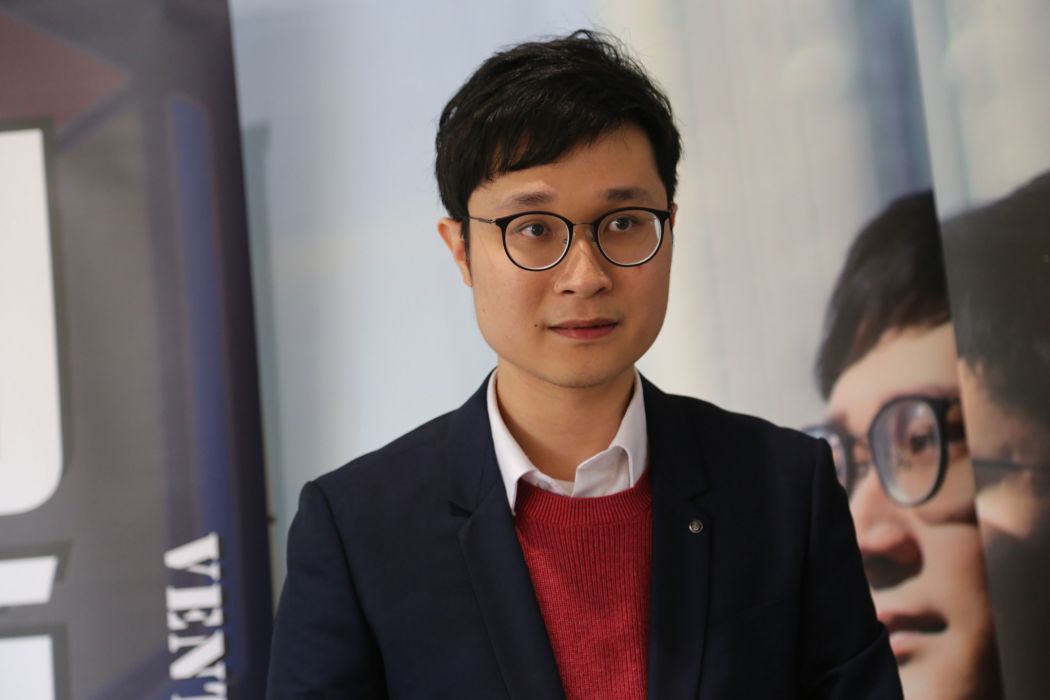
Its intimidation has made it difficult to gauge support for independence and self-determination. To declare oneself in favour of one of these positions publicly is to risk being regarded as an outlaw. A ‘veiled’ poll conducted in 2016 found 50 per cent of university students supported independence, with 90 per cent holding unfavourable views of the Communist Party and considering themselves Hong Kong people, not Chinese.
Another poll conducted in 2017 showed an all-time low in the percentage of 18-to-29-year-olds who identified as Chinese — only 3 per cent versus 65 per cent who said they were Hong Kongese. A 2016 poll conducted by Undergrad, the Hong Kong University Student Union magazine, showed 61 per cent of university students supported independence.
A CUHK poll in 2016 showed 40 per cent support amongst 15-to-24-year-olds and 17 per cent support among all age groups. The same poll in 2017 measured a drop in overall support for independence to 11 per cent.
The discrepancies and volatility in numbers suggest difficulty in gauging support, which I believe is related to the volatile political situation in general and intimidation by the Communist Party.
Apart from ‘veiled’ polls, polls with more differentiated questions would be helpful; for instance, do you support independence if Hong Kong can peacefully separate from China? If you are against independence, is it because you fear China’s response? Taking into account only your personal preference, do you favor independence?
A large amount of anecdotal evidence from interviews with activists, politicians, journalists and academics shows an ever-increasing number favoring independence, often as much as anything else because it has become impossible for them to see how Hong Kong could achieve democracy and protect its rights and liberties in any sustainable way under Communist rule.
Uighurs
While the exile Uyghur World Congress does not take an explicitly pro-independence position, it refers to Xinjiang as East Turkistan. Its symbol has the year 1933 on it, the year the first independent republic of East Turkistan was proclaimed. Both it and the Uyghur American Association explicitly advocate self-determination for Uighurs.
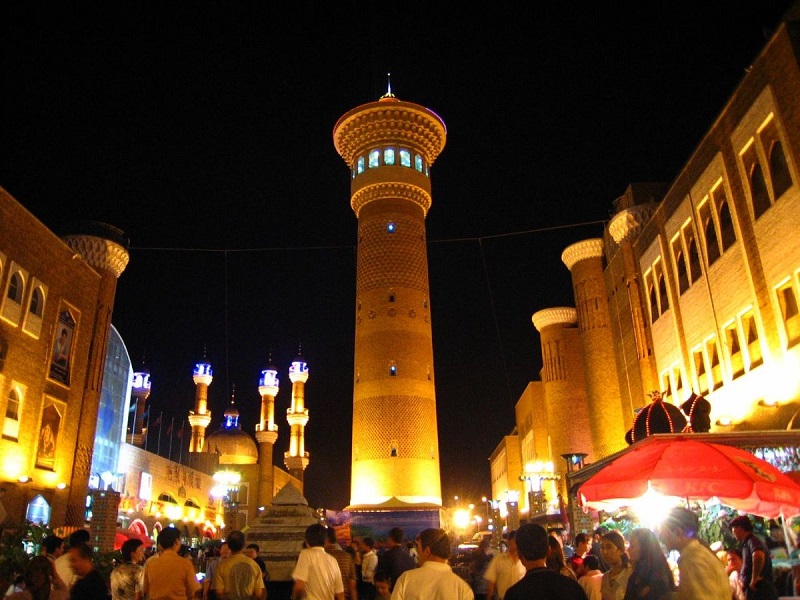
Conclusion: Party policy on the peripheries has been a miserable failure
It’s worth stressing that even among regime opponents who accept being part of China in some way, no matter where they come from, there is no enthusiasm for being part of China, especially any China ruled by the Party.
Rather, those who hold these positions simply regard other options such as independence as unrealistic; real autonomy under Chinese sovereignty is not the most desirable option but, they believe, the best deal they can get.
In the cases of all of the peripheries, the debates and the political awareness of their peoples run far ahead of anything the Party intended for them. If the measure of success of the Communist Party’s policies towards the peripheries is their consent to Party control, then it has failed miserably.
It’s 69 years since the Party took control of Xinjiang, 68 years after invading Tibet, 21 years after the handover of Hong Kong. And having called for the “reunification” of Taiwan with the “motherland” for the entirety of its rule, rather than gradually gaining the assent of the peoples of the peripheries to Chinese rule, the Party has alienated more of them than ever.
The power of the peripheries
And in that lies our power, the power to withhold consent, the power to resist imposition and tighter control. This is no small power. It has succeeded in delegitimizing the regime, not in its heartland, among the Han, where propaganda and censorship prevail, but in the peripheries themselves and in the eyes of much of the rest of the world, at least those who are paying attention.
In the last ten years, stories of the Tibetan uprising and self-immolations, the Sunflower Movement, the Umbrella Movement, and the resistance and oppression in Xinjiang have made headlines around the world.
A culture of resistance has arisen, the consolidation of which can build a solid foundation for the future. This culture has forced the regime to show that the only way it can continue to rule is by force, not by consent, and as such, it is illegitimate.
The China of the Communist Party is not a sustainable construct because it exists only through massive imposition and therefore can only continue by massive repression. To this the peripheries attest.
The power of the peripheries is the power of the powerless, a term coined by Vaclav Havel in his essay of the same name back in 1978. Havel wrote it only a year after Charter 77 was published in Soviet-era Czechoslovakia. Charter 77 was the precursor to China’s own Charter 08, for which Liu Xiaobo paid with his life.
Havel was concerned with the question of how to topple a regime that appeared omnipotent. His answer was that even the most powerful regime can only maintain its grip through the consent of the ruled, even if this consent consists of little more than passive resignation and going through the motions.
If the ruled withdraw their consent, the regime’s monopoly on power is unsustainable. It may not fall tomorrow or even in the near future, but its fate is sealed.
Perhaps the most famous term from Havel’s essay is “living in truth”. The idea behind it is that regimes such as the dictatorships of the Soviet Union and eastern Europe as well as the Chinese Communist Party maintain their grip by enforcing lies, by blanketing the society with lies, by making all of public life and politics little more than one big systemic lie.
People can choose to not believe the lies in private, but as long as they continue to go along with them in public, they help to reinforce the lie and therefore also the power of the regime. Once people refuse to go along with the lie, starting in very small ways in their daily lives, they begin to “live in truth” and the regime’s power begins to unravel.
Across the peripheries, many examples of this “living in truth” can be seen, both when people overtly stand up for themselves and confront the regime and when they take what may appear to be quieter and more understated measures having to do with reinforcing and protecting their culture, their religion, their language, their sense of separate identity.
To resist, to refuse, to reject, and to, more positively “live in truth”, constructing to the extent possible the culture and society we wish to see through our interactions with others and our political, cultural and economic actions — each of us must decide the degree to which we can do this and the most appropriate means.
The point is that the part of a human being, and of a people, that yearns for freedom, truth and dignity can never be fully repressed, and if we take that part and cultivate it, both individually in our own lives and collectively, we are also cultivating the power to withstand the power of the regime and eventually to strive toward self-determination, freedom, human rights and democracy.

The conventional wisdom is that because of our smallness, we are almost entirely dependent on what happens in the realms of power, first and foremost within the Party, and then, if the situation were ever to change, among the Han majority.
According to this wisdom, there is almost no chance that Tibet will ever be free, nor for that matter the Uighurs or Hong Kong people. The regime is simply too strong and will never allow it.
But that wisdom, such as it is, can be flipped: our very peripherality gives us some advantages and opportunities that those closer to the centre of power may not have or of which they may not avail themselves. As we defend ourselves from power, imposition, control and colonialism, we are also constructing the cultures of post-totalitarian societies and little by little realizing the state of affairs we wish to see and determining our future for ourselves.
From this perspective, the individual, and, by extension, the peripheries have only as much power as we realize within ourselves. If we believe we are powerless, then we are.
Part of the regime’s power derives from instilling this sense of powerlessness and, concomitantly, its own omnipotence. If we take what power we have into our own hands, it can eventually become a strength difficult to deny, especially over the long term. From this perspective, the seeming omnipotence of the regime can appear almost beside the point.
